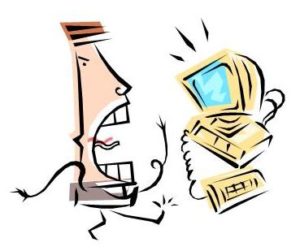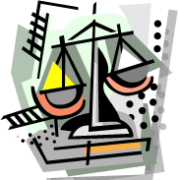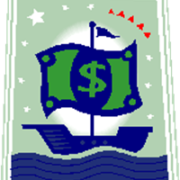Managing Your Anger
By Ellen Borowka
Anger is a big problem for many people. It’s a very powerful emotion. We see that in the destructive ways some people handle their anger. From violent crimes to domestic violence to everyday home and work situations, anger is very unpredictable. It seems to explode almost out of nowhere. So, it’s not surprising then that we have almost an instinctive fear of anger.
First, it may be helpful to understand that anger is not the same as violence or rage or being out of control. For example, when someone explodes with anger, this is just one way – a destructive way – to deal with one’s anger. And there are many other equally unhealthy ways, but none provide the satisfaction we hope for. Anger is simply one of our basic emotions, just like joy and sadness. If we start by thinking of emotions as neither good or bad then we can change how we interact with our anger. What is important is how we do or don’t express anger. That is what gets us into trouble.
It’s helpful to get a sense of what anger is all about. One definition is that anger is a strong passion or emotion of displeasure that is excited by a sense of injury or insult. So, there is usually an element of hurt involved in anger. Injury and anger are the two sides of the emotional coin: We seldom feel angry without also feeling hurt (insulted, injured) to some degree, and we seldom experience hurt without feeling anger (displeasure, hostility, and irritation). The same can be true of fear, fear ties closely to anger just like hurt. One reason for this is that one can feel weak and powerless when feeling hurt or fearful, whereas one usually feels powerful and strong through anger. So, anger seems to be an easier emotion to tolerate.
Another definition describes anger as a strong surge of feeling marked by an impulse to outward expression and often accompanied by complex bodily reactions. Anger is so insistent to be expressed that if we do not voluntarily express it in healthy ways, the emotional system will make endless attempts to express it in any possible way, including destructive and painful ones.
There are many different ways people deal with their anger, which are very unhealthy. The following are some of those ways:
Unfocused Anger: This is when we take our anger out on whoever or whatever is nearby. It’s the classic “kicking the trashcan because you’re mad at your spouse” maneuver. People may do things like beat up their car or yell at their secretary when actually they are mad at someone else. This kind of anger gets passed along too, like when the husband yells at the wife, who yells at the kids, who yells at the family pet.
Suppressing Anger: Another unhealthy way to deal with anger is when we stuff it down, bury it or mask it with other emotions. Suppression doesn’t complete the anger and in fact, seems to put the whole emotional system in a state of suppression. Our emotions don’t operate independently of other emotions, any more than our organs function in isolation from each other. So when we suppress one emotion, then we suppress them all to some extent. When we suppress our anger, it may feel like it’s gone, until something triggers the memory of the incident that is the source of the stored anger. Then the anger comes to the surface in full force until we can bury it again.
Anger Filter: When we store up anger, this can become a filter between us and the outside world, which colors everything as hostile and scary. We begin to see the world as cold and unfriendly where we have to guard ourselves against others. This filter also distorts our messages to the point where others hear our anger more than our love or support. This filter acts as a wall that alienates us from others.
Anger Wants Out: No matter how much we bury our anger, it will find a way to come out. It may create a physical illness like ulcers or a mental one like depression, guilt or a form of fear. Somehow it will dig its way out.
Parental Influences: Just like many other things in our lives, our style of anger was shaped and formed by different influences, and being able to see those influences helps us to change our style. One influence is our family. Most of us learn our emotional responses from our parents. We start learning ways to act and react when we are very young. We may copy our parents’ and others’ behavior. If Dad yelled alot or Mom bottled up her anger or Grandpa was always irritable, we may think this is how people deal with their anger and we may do likewise. If we were taught that anger is bad then we may deny our anger. Or we may look at how our parents handled anger and decide to respond in an opposite way, but not necessarily a much better way.
So, now that we have a better understanding of our anger, it’s helpful to become more aware of what triggers it and how we can handle it. The first exercise looks at the current  sources of anger and how we express it. Make three columns, title the first column,”What I’m Mad About…”, the second, “The Way I Show My Anger”, and the third column, “Why Do I Feel So Angry” then make a list under each. In the third column, consider what is going on underneath the anger. You probably feel hurt, what’s underneath the hurt? What expectations and needs are being neglected?
sources of anger and how we express it. Make three columns, title the first column,”What I’m Mad About…”, the second, “The Way I Show My Anger”, and the third column, “Why Do I Feel So Angry” then make a list under each. In the third column, consider what is going on underneath the anger. You probably feel hurt, what’s underneath the hurt? What expectations and needs are being neglected?
The second exercise is to help you to explore what anger is to you. Write at the top of a piece of paper, “Anger is…” then list out your beliefs, perceptions, and concepts you have about it. What you believe about anger will impact how you deal with it. If you believe that one should never, ever lose one’s temper, then that will influence how you express or suppress your anger. Next, look at where you learned these beliefs and your style of expressing anger. Explore the roots of your anger and hurt by asking yourself, “What does this situation remind me of from my past?” If we feel betrayed by a friend, perhaps someone from the past has done something very similar. Past anger and hurt usually fuels current anger and hurt.
Now that you have explored your anger, what do you want to change about it? Write some things you want to change and make a list of small steps to make the change you want. Implement the first step and continue with that until you feel ready for the next one. Some small steps might include taking 30 minute timeouts, walking around the block, and writing, drawing or sculpting your anger out. The last step continues your exploration of anger, which helps to manage it. Journal or use clay, paints or collage to create a picture of your anger. Always seek support and a realistic perspective from friends, counselors or clergy when dealing with difficult situations.
I have found the following quote to be very helpful in understanding anger, “…if ye bite and devour one another, take heed that ye be not consumed one of another…” – Galatians. Don’t let anger take over and devour all that is good in your life. When we let anger consume our lives, then we lose the essence of life.
This article contains some modified concepts from “Freedom from Anger” by Dr. Roger Daldrup and Dodie Gust.
Permission is needed from Lighthouse Consulting Services, LLC to reproduce any portion provided in this article. © 2014 This information contained in this article is not meant to be a substitute for professional counseling.
Ellen Borowka, MA, Senior Analyst of Lighthouse Consulting Services, LLC and her organization constantly remain focused on their mission statement – “To bring effective insight to your organization”. They do this through the use of in-depth work style assessments to raise the hiring bar so companies select the right people to reduce hiring and management errors. They also have a full service consulting division that provides domestic and international interpersonal coaching, executive onboarding, leadership training, global options for expanding your business, sales and customer service training, operational productivity improvement, 360s and employee surveys as well as a variety of workshops. Ellen has over 15 years of data analysis and business consulting experience and is the co-author of the books, “Cracking the Personality Code” and “Cracking the Business Code”. To order the books, please visit www.lighthouseconsulting.com.
If you would like additional information on this topic or others, please contact your Human Resources department or Lighthouse Consulting Services LLC, 3130 Wilshire Blvd., Suite 550, Santa Monica, CA 90403, (310) 453-6556, dana@lighthouseconsulting.com & our website: www.lighthouseconsulting.com.
Lighthouse Consulting Services, LLC provides a variety of services, including in-depth work style assessments for new hires & staff development, team building, interpersonal & communication training, career guidance & transition, conflict management, 360s, workshops, and executive & employee coaching. Other areas of expertise: Executive on boarding for success, leadership training for the 21st century, exploring global options for expanding your business, sales and customer service training and operational productivity improvement.








